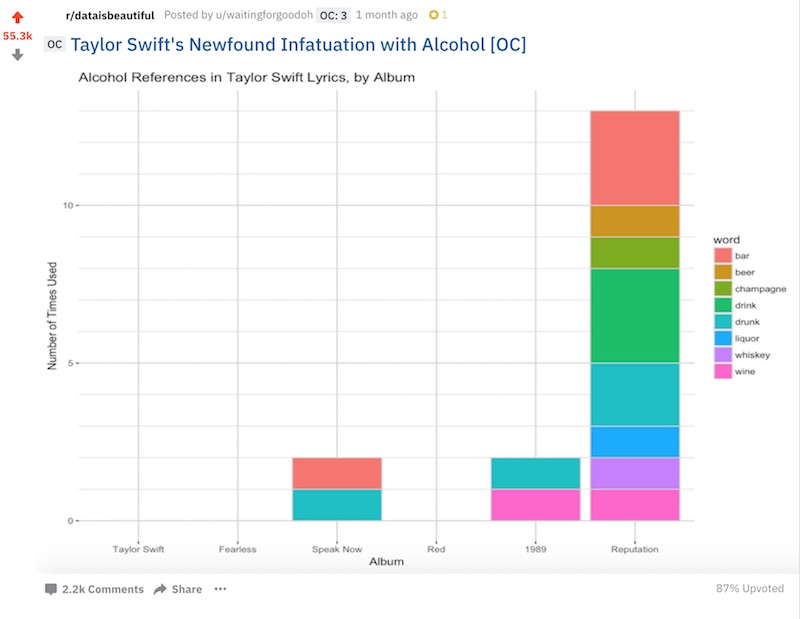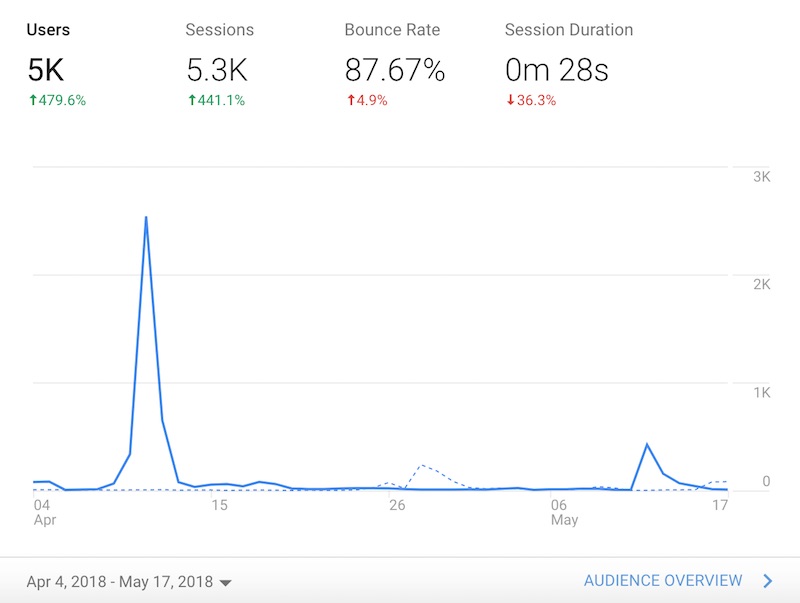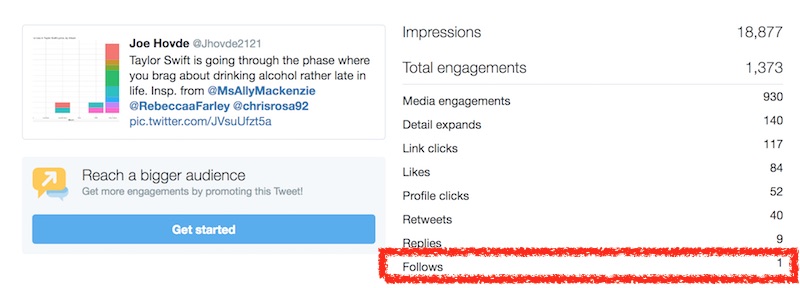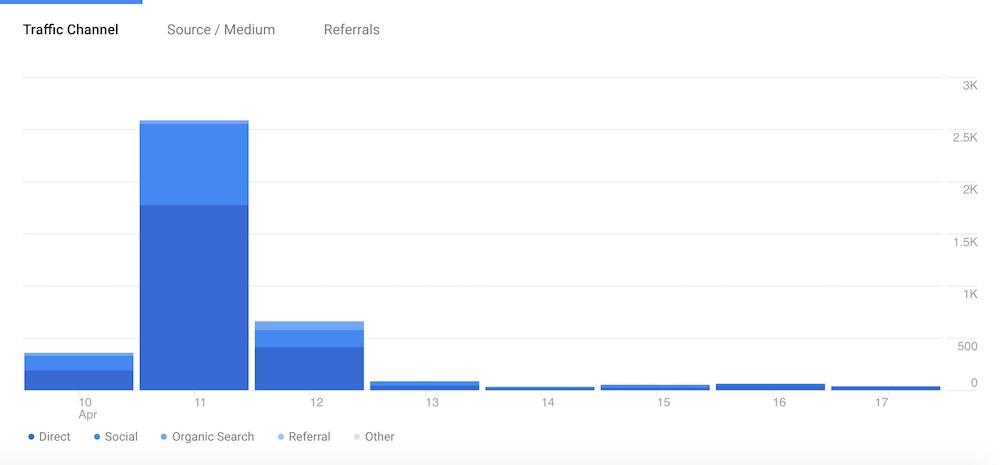Viral posts don’t bring sustained traffic.
I thought they did for a long time, before I started building websites and seeing the effects of traffic spikes. It’s natural to assume that if a post “blows up” and is seen by hundreds of thousands of people, it will bring lots of traffic (or revenue, users etc.) for a long time.
This “big break” fallacy is something I’ve seen in myself and other people and it’s worth examining why it’s not correct. With that in mind, I’d like to share some data from a recent article I had “go viral” on reddit. I hope it’ll be illuminating and encourage you to push for sustained, incremental progress over short term spikes.
The viral post’s stats

At the time I’m writing this, this post was the 16th highest upvoted post of all time on the /r/dataisbeautiful subreddit, with about 55 thousand upvotes. The subreddit has 13 million subscribers, and the post has 872 thousand views on reddit. These numbers aren’t “viral” on a truly universal scale (compared to something like the Ice Bucket Challenge or the recent Yanny and Laurel nonsense), but for a niche topic like data visualization this is a lot of traffic.
The effects of the viral post on my web traffic

As is clear from the Google Analytics data above, the viral reddit post caused a big spike in traffic for a day or two, as people clicked through to my blog post from the reddit post. But the traffic quickly died down, and I reverted to the modest visitor numbers I had before. This phenomenon repeated itself in mid-May on a smaller scale (the spike on the right) when I published this article visualizing Arctic Monkeys data that got some traffic on Twitter.
A bit deflating, isn’t it? All those upvotes, all those viewers, only for things to go back to where they were!
Yes, it is a bit deflating. But this has been the reality I’ve seen over and over, and it’s become obvious to me that growth almost always comes through consistent output over time, much like compounding interest in an investment account.
The effects of a viral post on my Twitter following
A viral post can be an opportunity to gain new followers on social media or new subscribers to an email list. This is definitely something to aim for if you’re looking to build an audience, because someone following you will be a more sustaining boost to your traffic than a simple pageview.
However, I think most people overestimate these effects too. Take a look at this amusing funnel from my Tweet about the Taylor Swift analysis, which was linked on the Reddit post:

Now, I think this particular conversion funnel underestimates the effect on my Twitter following as I had probably 40 people follow me following this post, but apparently not directly through the tweet (they probably clicked on my profile first).
Still, I remain definitively not a twitter celebrity.
Caveat: This is a place where writing good calls-to-action and optimizing for a user taking a certain action can help a lot. If I had written, “If you want to see more content like this, sign up for my email list!”, more people would have signed up for my email list.
By the way, if you want to see more content like this, sign up for my email list!
How to think about virality in your work
All this is not to say that there aren’t any benefits of having a post go viral. Here are the biggest ones I can think of:
- Having your work seen by a lot of people drastically increases the chances that someone will connect with your work and reach out to you with an opportunity; this has led me to some interesting freelance projects
- It is a nice ego boost and the influx of dopamine can be good motivation to keep producing when you’re not feeling particularly motivated
- It massively increases the likelihood that your work will get picked up by other blogs or media outlets, which have positive effects on traffic, SEO etc.
- It gives you a lot more qualitative data (in terms of peoples’ responses to your work) and quantitative data (bounce rates, clickthroughs etc.) to consider as you develop your work
If you really want to capitalize on a viral post, I’d give the following recommendations:
- Write clear calls to action in visible places; this will help you convert a higher fraction of that initial traffic spike
- Share your work across other platforms; if one platform responded well to it it’s likely others will too
- Re-share your work later. It’s likely that many people missed the post the first time (for example, my post in the dataisbeautiful subreddit had 800 thousand views, but there are millions of subscribers)
- Try to personally connect with people who comment on your work and see if there’s an opportunity to work with them
- Above all, enjoy it for a bit but then get back to work. Building an audience takes time.
Thanks for reading! If you enjoyed this, you might like Fred Wilson’s article about his blog’s traffic. The pleasure I took in seeing his google analytics data inspired me to share my considerably more modest numbers.
